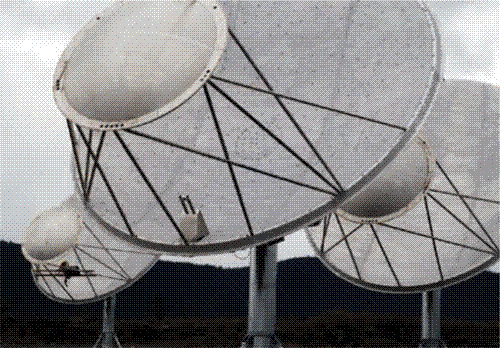Are we alone in the universe?
By sandronir
@sandronir (1443)
Italy
December 18, 2006 4:15pm CST
Alone, in all that space? Not likely. Just do the numbers: Several hundred billion stars in our galaxy, hundreds of billions of galaxies in the observable universe, and 150 planets spied already in the immediate neighborhood of the sun. That should make for plenty of warm, scummy little ponds where life could come together to begin billions of years of evolution toward technology-wielding creatures like ourselves. No, the really big question is when, if ever, we'll have the technological wherewithal to reach out and touch such intelligence. With a bit of luck, it could be in the next 25 years.
Workers in the search for extraterrestrial intelligence (SETI) would have needed more than a little luck in the first 45 years of the modern hunt for like-minded colleagues out there. Radio astronomer Frank Drake's landmark Project Ozma was certainly a triumph of hope over daunting odds. In 1960, Drake pointed a 26-meter radio telescope dish in Green Bank, West Virginia, at two stars for a few days each. Given the vacuum-tube technology of the time, he could scan across 0.4 megahertz of the microwave spectrum one channel at a time.
Almost 45 years later, the SETI Institute in Mountain View, California, completed its 10-year-long Project Phoenix. Often using the 350-meter antenna at Arecibo, Puerto Rico, Phoenix researchers searched 710 star systems at 28 million channels simultaneously across an 1800-megahertz range. All in all, the Phoenix search was 100 trillion times more effective than Ozma was.
Besides stunning advances in search power, the first 45 years of modern SETI have also seen a diversification of search strategies. The Search for Extraterrestrial Radio Emissions from Nearby Developed Intelligent Populations (SERENDIP) has scanned billions of radio sources in the Milky Way by piggybacking receivers on antennas in use by observational astronomers, including Arecibo. And other groups are turning modest-sized optical telescopes to searching for nanosecond flashes from alien lasers.
Still, nothing has been heard. But then, Phoenix, for example, scanned just one or two nearby sunlike stars out of each 100 million stars out there. For such sparse sampling to work, advanced, broadcasting civilizations would have to be abundant, or searchers would have to get very lucky.
To find the needle in a galaxy-size haystack, SETI workers are counting on the consistently exponential growth of computing power to continue for another couple of decades. In northern California, the SETI Institute has already begun constructing an array composed of individual 6-meter antennas. Ever-cheaper computer power will eventually tie 350 such antennas into "virtual telescopes," allowing scientists to search many targets at once. If Moore's law--that the cost of computation halves every 18 months--holds for another 15 years or so, SETI workers plan to use this antenna array approach to check out not a few thousand but perhaps a few million or even tens of millions of stars for alien signals. If there were just 10,000 advanced civilizations in the galaxy, they could well strike pay dirt before Science turns 150.
The technology may well be available in coming decades, but SETI will also need money. That's no easy task in a field with as high a "giggle factor" as SETI has. The U.S. Congress forced NASA to wash its hands of SETI in 1993 after some congressmen mocked the whole idea of spending federal money to look for "little green men with misshapen heads," as one of them put it. Searching for another tippy-top branch of the evolutionary tree still isn't part of the NASA vision. For more than a decade, private funding alone has driven SETI. But the SETI Institute's planned $35 million array is only a prototype of the Square Kilometer Array that would put those tens of millions of stars within reach of SETI workers. For that, mainstream radio astronomers will have to be onboard--or we'll be feeling alone in the universe a long time indeed.
4 responses
@srhelmer (7029)
• Beaver Dam, Wisconsin
18 Dec 06
The odds certainly are against it. However, if we assume everything in the universe was created at the same time, then it's logical to assume any life form out there is in the same stage of space travel as we are. So, we probably won't be in contact with them for some time.
@sandronir (1443)
• Italy
18 Dec 06
I agree with you. I believe theres other beings out there. I personally think we are not alone, there are aliens out there. but dont quickly think they are aliens that look like green black eyes kind... they could be micro baceria or similar... they are living things too.
@hiteshnihalani (2121)
• India
28 Dec 06
your discussion is great...in your discussion you have taken a good issue..
no i dont think so...









